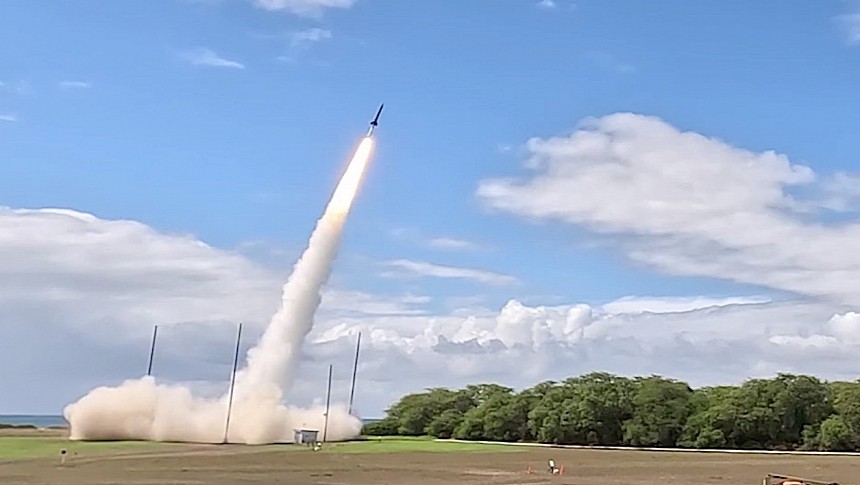At the end of October 2023, we learned of an Arleigh Burke-class destroyer taking on multiple targets at the same time. It was not something that happened in of the many of our planet's hot spots, but during a test event called Vigilant Wyvern which took place in the Pacific Ocean.
Last month's piece of news involved the use of an updated version of the Aegis Weapon System, a piece of technology developed by Lockheed Martin with the single goal of protecting Navy ships against threats heading its way.
Two months after we first learned of that achievement, one of the companies involved in the exercise, defense contractor Kratos, let us in on more details about the test.
Aegis is a collection of hardware and software that gives ships unprecedented defense capabilities. It comprises everything from displays and radars to detection and tracking computers.
At the top of it all sits the missile launch element that can fire anti-aircraft, anti-surface, anti-submarine, and ballistic missiles either to defend the ship it's based on, or to engage targets during offensive operations.
Aegis has been around for a while, and it's currently deployed on over 110 U.S. Navy ships. Technically, each one of these systems is capable of engaging multiple targets at the same time, but it wasn't until the exercise which took place at the Pacific Missile Test Range Facility in Kauai, Hawaii that this knowledge was actually put to the test.
We learned this week the test involved Aegis taking on two Short-Range Ballistic Missiles (SRBM) and, at the same time, fighting off a pair of subsonic anti-ship cruise missiles, a role played during the exercise by aerial target drones.
The SRBMs were engaged with two Standard Missile 3 Block IA (SM-3 Blk IA) interceptors fired from the USS Carl M Levin destroyer, one of the most recent ships of its class made – the ship was commissioned in the summer of this year.
The drones used during the live-fire, raid scenario were of the BQM variety, the "only subscale aerial target platform operated by the U.S. Air Force." These things can play the role of incoming missiles at speeds of Mach 0.9, and come in as low as 6.6 feet (two meters) off the surface of the water.
The four-week exercise is described as "one of the largest Integrated Air and Missile Defense (IAMD) events ever conducted in the U.S. Indo-Pacific Command Area of Responsibility," but, most importantly, it was the first one to show off a concurrent engagement of both ballistic and anti-air missiles.
It's clear that we average civilians don't have an exact picture of what went on in the Pacific during the tests, but it's not unlikely we'll learn more about that as both the Navy and its partners punch in the numbers and draw some conclusions.
Two months after we first learned of that achievement, one of the companies involved in the exercise, defense contractor Kratos, let us in on more details about the test.
Aegis is a collection of hardware and software that gives ships unprecedented defense capabilities. It comprises everything from displays and radars to detection and tracking computers.
At the top of it all sits the missile launch element that can fire anti-aircraft, anti-surface, anti-submarine, and ballistic missiles either to defend the ship it's based on, or to engage targets during offensive operations.
Aegis has been around for a while, and it's currently deployed on over 110 U.S. Navy ships. Technically, each one of these systems is capable of engaging multiple targets at the same time, but it wasn't until the exercise which took place at the Pacific Missile Test Range Facility in Kauai, Hawaii that this knowledge was actually put to the test.
We learned this week the test involved Aegis taking on two Short-Range Ballistic Missiles (SRBM) and, at the same time, fighting off a pair of subsonic anti-ship cruise missiles, a role played during the exercise by aerial target drones.
The SRBMs were engaged with two Standard Missile 3 Block IA (SM-3 Blk IA) interceptors fired from the USS Carl M Levin destroyer, one of the most recent ships of its class made – the ship was commissioned in the summer of this year.
The drones used during the live-fire, raid scenario were of the BQM variety, the "only subscale aerial target platform operated by the U.S. Air Force." These things can play the role of incoming missiles at speeds of Mach 0.9, and come in as low as 6.6 feet (two meters) off the surface of the water.
The four-week exercise is described as "one of the largest Integrated Air and Missile Defense (IAMD) events ever conducted in the U.S. Indo-Pacific Command Area of Responsibility," but, most importantly, it was the first one to show off a concurrent engagement of both ballistic and anti-air missiles.
It's clear that we average civilians don't have an exact picture of what went on in the Pacific during the tests, but it's not unlikely we'll learn more about that as both the Navy and its partners punch in the numbers and draw some conclusions.






